It is easy for a bounce rate to be overlooked in the whole scheme of SEO. Many site owners have seen their bounce rate, but they don’t know how to calculate it and can’t explain how it affects their SEO. A bounce rate is a percentage calculated from the number of visitors who leave a landing page without exploring or engaging further on a website. Typically, it is calculated by dividing the number of bounces in a given time period by the total number of entrances, or visits, during that same period of time. The average bounce rate hovers between 45 and 55 percent. Anything below 45 percent is considered excellent and a bounce rate above 65 percent is more than just disappointing.
When Google returns a query, it tries to return the top 10 results for each interpretation of a keyword search. Google tracks and monitors traffic and bounce rates on sites to calculate the information into rankings and queries. If a high number of visitors leave a landing page without navigating through the site, then Google assumes the content is not relevant to the keyword search. Most of the time they will remove the page from the top of the SERPs. This is why it is crucial to monitor and manipulate your bounce rate. It has a direct effect on your SEO and a high bounce rate can cripple your entire strategy.
Metrics
The plain truth is that the formula at the beginning of this text is what most people use to calculate a bounce rate because it is the most reliable formula available. However, Google uses their own formula and analytics when tracking a site’s traffic and calculating bounce rates. In fact, they have an algorithm specifically for it. Since this data can’t accurately measure data and is easily manipulated, Google’s formula includes tactics to try to decipher the bounce rate connotation. This can only be successful to a point because you are dealing with artificial intelligence. For instance, a high bounce rate on a page with a call-to-action may actually indicate that visitors are completing the CTA. This is a bounce rate with a good connotation, which may not always be obvious to the search engines. It can be difficult to optimize for a bounce rate because it does not always improve content value, which should be the end goal.
SEO Indicators
If you read your bounce rate contextually, it can indicate weaknesses in your SEO strategy. For instance, pages that have a slow load time or are not mobile-friendly will have a higher bounce rate. Improve those things and your SEO will also improve. Content which doesn’t match the query can also produce a high bounce rate. The thing is that optimizing for the bounce rate is like treating a symptom. The real problem is a weakness in your SEO strategy. Strengthening the weakness and improving your SEO tactics will lower your bounce rate. Lowering your bounce rate, in turn, improves your SEO. Its all tied together.
In conclusion, a high bounce rate can cripple your SEO strategy. However, it can also indicate weaknesses in your strategy and show you what you need to focus on. Use your bounce rate as more of an isolator and an indicator. When you have a page with a high bounce rate, improve the weakness and your bounce rate will improve. Unfortunately, trying to optimize for your bounce rate will not improve your metrics in the long run. You do need to pay attention to a high bounce rate, but you need to address the cause.






